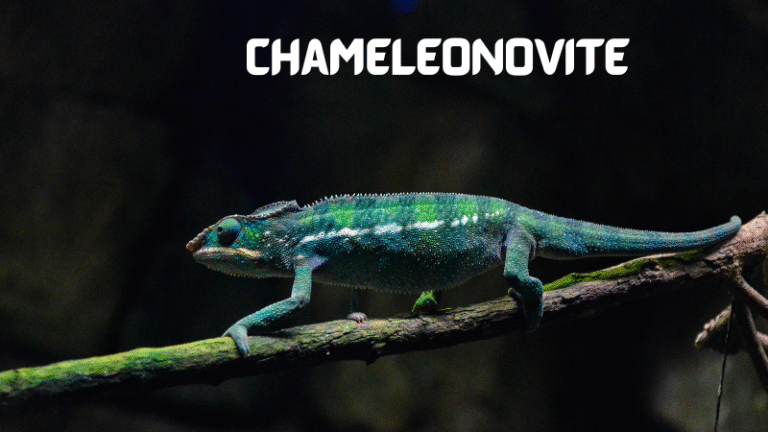chameleónovité—the family of chameleons, nature’s most poetic shape-shifters.To speak of chameleónovité is to speak of transformation itself. Their bodies are canvases, painting moods in hues of emerald, sapphire, and gold. Their eyes see the world as two halves and yet one. Their movements teach us the art of patience, the sacredness of balance.
In their existence, they are more than reptiles. They are lessons in survival, metaphors for adaptability, and symbols of life’s ever-changing nature.
What is Chameleónovité?
Scientific Meaning
Chameleónovité refers to the family of chameleons, scientifically known as Chamaeleonidae. Within this family are more than 200 species, each unique in color, size, and habitat. From the tiny Brookesia nana—barely the length of a paperclip—to the majestic Parsons chameleon stretching over half a meter, they are a spectrum of life’s creativity.
The Family of Color-Changing Lizards
Belonging to the order Squamata, chameleónovité are cousins to iguanas and agamids. Yet they stand apart, crowned with an unmatched gift—the ability to change their very skin as if rewriting their own existence. This family is nature’s poetry written in scales.
The Origins of Chameleónovité in Nature
Evolutionary Path
Chameleons trace their lineage back millions of years, their fossils found in Europe, Asia, and Africa. Today, most species thrive in Madagascar, that island of evolutionary wonders, while others wander through Africa, Asia, and southern Europe.
Adaptations Across Environments
Each chameleon carries the signature of its home. Forest-dwelling species paint themselves in leafy greens, while desert-dwellers wear sandy tones. Their very bodies echo the landscapes they inhabit, reminding us that life thrives when it learns to echo its surroundings.
The Magic of Color Change
Science Behind Shifting Hues
The magic lies not in pigment, but in physics. Under their skin lie tiny structures called iridophores—cells filled with nanocrystals. By adjusting the spacing of these crystals, chameleons bend light itself, changing the colors reflected from their bodies.
It is not only camouflage. It is conversation. Chameleons change color to express mood, attract mates, or ward off rivals. Their skin becomes language—an alphabet of light.
Symbolism of Transformation
In this gift, we see a mirror of humanity. We too change, though not always in color. We shift in spirit, in voice, in identity. Chameleónovité remind us that transformation is not betrayal—it is survival, it is poetry, it is truth.
Chameleónovité as Masters of Adaptation
Camouflage for Survival
Camouflage is both shield and prayer. To blend into the bark of a tree, to vanish into the shade of a leaf, is to write one’s existence into the landscape. Chameleons do not fight for survival with claws and teeth—they disappear, teaching us that sometimes survival is not in being louder, but in being unseen.
Emotional Lessons in Flexibility
Their gift teaches us flexibility. To adapt is not to lose oneself—it is to find new ways of being. Just as a chameleon does not become the tree but finds harmony with it, we too can adapt to life’s changes while remaining true to our essence.
The Beauty of Their Eyes
Independent Vision
A chameleon’s eyes are wonders of design. Each moves independently, scanning two different worlds at once. One eye watches the branch, the other the horizon. Yet when it strikes, both eyes converge, uniting on a single truth.
Seeing the World in Two Ways
What lesson lies in those eyes? That we too must see with dual vision. One eye on the present, the other on the future. One eye on ourselves, the other on the world. Only then can we strike with clarity.
The Slow and Gentle Grace of Movement
Poetic Patience
A chameleon does not rush. Each step is cautious, measured, like a dancer swaying with invisible music. Its tail coils and uncoils like a verse. Watching it move is like watching time slow into silence.
Symbolism of Balance
This slowness is not weakness—it is wisdom. Chameleónovité teach us that haste blinds us, but patience reveals the path. To move slowly is to move surely.
Chameleónovité in Human Culture
Myths and Legends
Across cultures, chameleons are creatures of mystery. In African folklore, they are messengers between gods and humans, carrying omens of life and death. In Madagascar, they are seen as magical beings, their shifting colors symbols of fate’s unpredictability.
Modern Metaphors
Today, the word chameleon has entered our language to describe those who adapt easily, who blend into every setting. It is both praise and critique—a reminder of the delicate balance between adaptation and authenticity.
